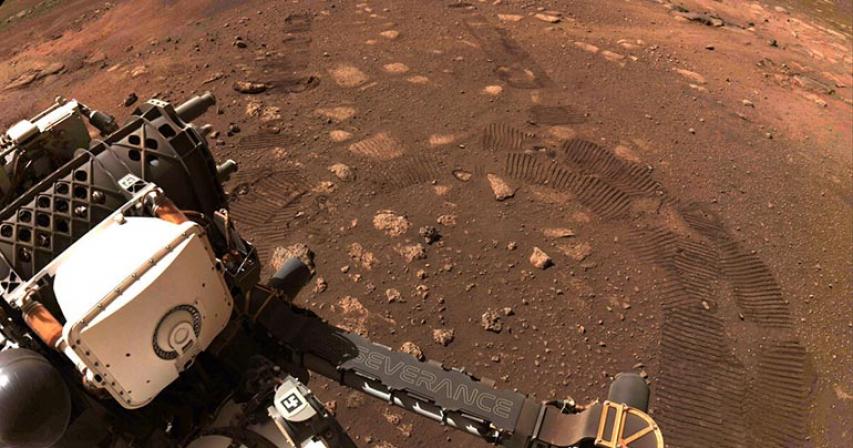The US space agency's Perseverance rover has wiggled its wheels and undertaken its first Martian drive.
It didn't move far - just 6.5m (21ft) in total.
But Nasa's deputy project scientist Katie Stack Morgan said it was a significant moment.
"While the rover is still doing a lot of engineering checkouts, the minute 'the rubber' begins to move we can consider ourselves explorers on the surface of Mars," she told BBC News.
It's two weeks now since the one-tonne robot made its dramatic descent to the Red Planet.
Engineers have spent the time commissioning the vehicle and its many complex systems, including its instruments and robotic arm.
Everyone, however, has been waiting for Perseverance to start rolling. It happened on Thursday. The robot went forward a short way, spun on the spot 150 degrees, and then backed up a bit.
"You can see the wheel tracks that we left on Mars; I don't think I've ever been happier to see wheel tracks," said Perseverance mobility engineer Anais Zarifian.
"This is just a huge milestone for the mission and the mobility team. We've driven on Earth but driving on Mars - that's the ultimate goal, and just so many people have worked towards this very moment for years."
Perseverance was put down in a near-equatorial crater called Jezero, to search for evidence of past life.
This will involve roving some 15km over the coming Martian year (roughly two Earth years).
Scientists want to reach a number of enticing rock formations in the crater that might retain a record of ancient biological activity.
Among these is what looks in satellite imagery to be a delta - a structure built up from the silt and sand dumped by a river as it enters a wider body of water. In Jezero's case, this wider body was very likely a crater-wide lake that existed billions of years ago.

Comments